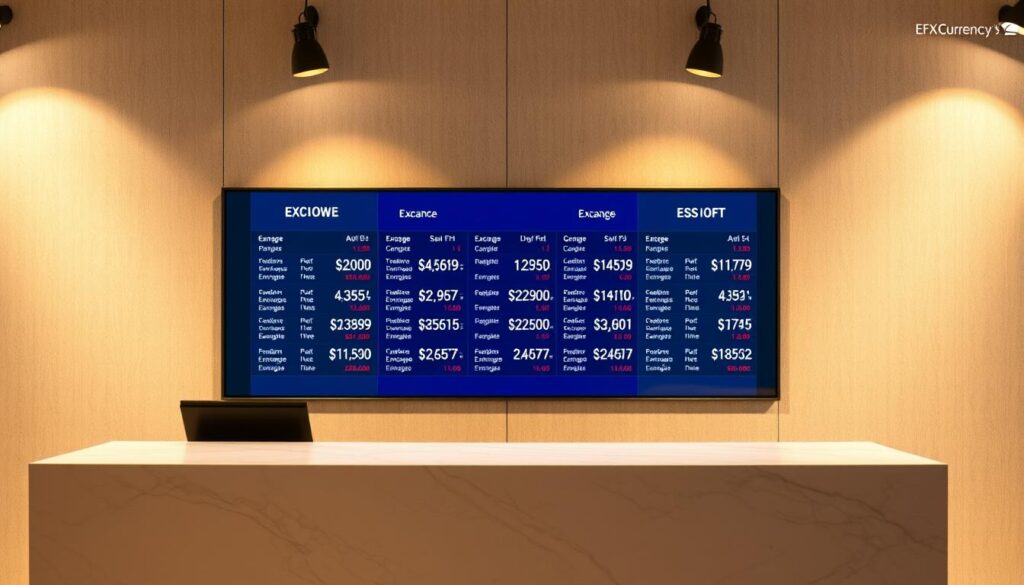Many beginners dive into currency markets lured by the idea of turning small investments into big wins. What they often miss is how quickly things can go sideways. Brokers promote tools that let traders control large positions with minimal capital, but rarely explain the math behind the risks.
This financial amplifier works both ways. A single trade can multiply gains or wipe out accounts faster than expected. While accessibility is a selling point, statistics show most retail participants lose money when using high ratios.
Newcomers frequently overlook critical safeguards. Discipline and education separate those who thrive from those who barely survive. Without proper risk management strategies, even promising opportunities can become costly lessons.
The currency market rewards preparation. Understanding how position sizing and margin interact isn’t optional—it’s essential. This knowledge forms the foundation for making informed decisions rather than relying on luck.
Understanding the Basics of Forex Trading
Every day, trillions change hands in a market that never sleeps. The forex market operates as a decentralized network connecting banks, institutions, and individual traders worldwide. With daily volumes surpassing $6 trillion, it offers unmatched liquidity and accessibility.
Key Elements of the Forex Market
Currencies trade in pairs like EUR/USD or GBP/JPY, reflecting their relative values. Three categories dominate:
- Major pairs: Highly liquid combinations like USD/JPY
- Minor pairs: Less common crosses without the US dollar
- Exotic pairs: Emerging market currencies paired with majors
Importance of Liquidity and Trading Sessions
High liquidity means traders execute orders swiftly with minimal price gaps. Four global sessions drive activity:
- London (8 AM–5 PM GMT)
- New York (1 PM–10 PM GMT)
- Tokyo (12 AM–9 AM GMT)
- Sydney (10 PM–7 AM GMT)
Overlaps between sessions boost volatility. For example, the London-New York crossover accounts for 70% of daily trading volume. Understanding bid-ask spreads and pip values helps traders analyze costs before entering positions.
Understanding Leverage in Forex

Traders often encounter a double-edged sword when entering currency markets: the power of amplified positions. This tool lets participants control larger trades than their initial deposit allows. By using a ratio system, individuals can access greater market exposure through borrowed funds from brokers.
Definition and Fundamental Concepts
Leverage acts as a multiplier for trading capacity. For example, a 1:100 ratio means £1,000 controls £100,000 in currency pairs. Brokers require collateral (margin) to secure these positions, typically a small percentage of the total trade value.
This approach magnifies both profits and losses. A 2% price shift with 1:50 leverage becomes a 100% gain or loss relative to the trader’s capital. Markets reward disciplined strategies but punish impulsive decisions swiftly.
Three critical points define responsible usage:
- Margin acts as a safety deposit, not a fee
- Higher ratios increase volatility sensitivity
- Risk management determines long-term success
Many newcomers mistakenly view this tool as free capital. In reality, it demands precise calculations and emotional control. Successful traders treat borrowed funds like a scalpel – sharp, intentional, and handled with care.
How Leverage Works: From Margin to Exposure
Brokers require traders to lock in collateral before executing amplified trades. This deposit, called margin, determines how much capital one can control. For example, a £10,000 position with 1:50 leverage needs just £200 as collateral.
The Role of Margin in Opening Positions
Margin acts like a security deposit for borrowed funds. Two types matter most:
- Initial margin: Funds required to open a position
- Maintenance margin: Minimum balance to keep trades active
If market moves shrink account equity below maintenance levels, brokers issue margin calls. Traders must add funds or close positions. Consider this scenario:
- Open a £100,000 EUR/GBP trade with 1:30 leverage
- Initial margin: £3,333
- Maintenance threshold: £2,500
Volatility often triggers higher margin demands. During major news events, some platforms double requirements. Regulations also play a role – UK brokers cap retail leverage at 1:30 under FCA rules.
Smart traders monitor their exposure constantly. Keeping spare margin cushions protects against sudden price swings. Remember: borrowed capital magnifies risks as much as rewards.
Exploring Leverage Ratios and Margin Requirements

Financial amplifiers come in various intensities, each demanding specific skills. Traders must understand how different multipliers affect their capital and risk exposure. The right ratio acts like a tailored suit – too loose invites danger, too tight limits mobility.
Common Ratios in Currency Markets
Conservative approaches start at 1:10. With $1,000, traders control $10,000 positions – ideal for learning market rhythms. Moving to 1:50 ratios, the same capital commands $50,000. This middle ground suits those comfortable with moderate swings.
Aggressive strategies use 1:500 ratios. Here, $1,000 controls half a million in trades. These high-stakes scenarios require ironclad discipline and real-time monitoring. Each tier serves distinct experience levels:
- 1:10-1:20: Newcomers’ safety net
- 1:50-1:100: Balanced growth potential
- 1:200+: Expert territory
Margin Math Made Simple
Margin requirements shrink as ratios grow. A $10,000 trade needs $1,000 at 1:10, but just $20 at 1:500. This inverse relationship amplifies both opportunity and peril. Consider a 100-pip movement:
- 1:10 ratio: 10% account change
- 1:100 ratio: 100% swing
- 1:500 ratio: 500% volatility
Seasoned traders often keep spare funds beyond minimum margins. This buffer prevents forced closures during sudden price spikes. Remember: higher ratios demand tighter stop-loss orders and smaller position sizes.
Real-World Examples of Leveraged Trading

Numbers tell clearer stories than theories in currency markets. Let’s examine practical scenarios showing how capital multipliers work across popular pairs.
Case Study: GBP/USD Trade Analysis
A trader buys one standard lot of GBP/USD at 1.2860. Without borrowed funds, this $100,000 position requires $128,600. With a 10% margin requirement, they deposit $10,000 instead. If rates rise 20 pips to 1.2880:
- Profit: $200 (0.16% gain without capital amplification)
- Return on margin: 2% ($200/$10,000)
The same math applies to losses. A 20-pip drop erases $200 – 2% of the deposited funds. This shows how borrowed capital magnifies outcomes proportionally.
Compare this to EUR/USD trading. A 30-pip move on a $100,000 position:
- EUR/USD pip value: $10 per full lot
- Profit/Loss: $300 (30 pips × $10)
- Margin needed: $10,000 at 1:10 ratio
Different currency pairs have unique pip values. Traders must calculate these before entering positions.
Real-world costs impact results. A $200 gain might shrink due to:
- 2-pip spread: $20 deduction
- Overnight swap fee: $5 daily charge
These factors highlight why risk management matters more with amplified exposure.
Risk Management Strategies for Leveraged Forex Trading
Smart traders know survival depends on controlling dangers before chasing gains. Effective strategies transform amplified positions from potential pitfalls into calculated opportunities. Three pillars form this defense system: precise position sizing, protective orders, and emotional discipline.
Setting Stop-Loss Orders and Managing Exposure
Stop-loss tools act as circuit breakers for volatile markets. Traders choose from:
- Market stops: Close positions at current prices
- Limit stops: Trigger at predefined levels
- Trailing stops: Adjust automatically with price movements
Position size calculations prevent margin calls. Risking 2% of a £10,000 account means limiting losses to £200 per trade. The formula: (Account balance × Risk percentage) ÷ Stop-loss pips = Position size.
Practical Techniques to Mitigate Losses
Diversification reduces dependency on single outcomes. Avoid holding correlated pairs like EUR/USD and GBP/USD simultaneously. During high-impact news events, lowering ratios softens volatility shocks.
- Monitor free margin levels daily
- Use volatility indicators to adjust exposure
- Review trades weekly for pattern recognition
Psychological traps multiply with borrowed capital. The Kelly Criterion helps mathematically balance ambition with reality – never risk more than historical win rates justify. Successful traders treat each decision as one in a thousand, not a make-or-break moment.
Comparing Leverage Across Different Financial Markets
Capital multipliers vary wildly between asset classes. While currency markets dominate discussions about amplified positions, other financial markets offer distinct rules and ratios. Understanding these differences helps traders allocate funds wisely.
Forex vs. Share CFDs and Crypto CFDs
Stock trading typically allows smaller ratios than currency pairs. Buying 100 shares priced at $10 each normally requires $1,000. With 5:1 leverage, brokers let traders control this position using $200 instead. The freed capital can fund other trades.
Share CFDs often cap ratios at 10:1 due to equities’ lower volatility. Cryptocurrency CFDs hover between 2:1 and 20:1 – higher than stocks but lower than forex. This reflects crypto’s extreme price swings and evolving regulations.
Commodity markets show split personalities. Gold and oil positions might use 20:1 ratios, while wheat contracts could require 5:1. Regulatory standards also differ – UK brokers follow FCA limits, while crypto platforms face fewer restrictions.
Smart traders adapt strategies to each arena. A $1,000 account behaves differently in forex versus stock indices. Matching tactics to market rhythms separates calculated risks from reckless bets.



